Cutting boards are a necessity and there is no doubt about it. Whether it is about chopping veggies, mincing meat, or serving a hot dish, a nice chopping board is always by your side.
Cutting boards come in a variety of lengths, colors, and materials. However, a good chopping board is durable, easy to clean, and most of all, kind to your knives.
There are varying types of cutting boards in the market these days. From the ravishing marbles to the glazed glass ones, and the evergreen bamboo cutting boards to the relatively new rubber cutting boards. Amongst all these, we know choosing the best cutting board material can be mind-boggling.
But don’t worry, we have got you covered! Below we have compared a variety of cutting board materials along with their pros and cons to help you make an easier decision.
Table of contents
Wooden cutting board
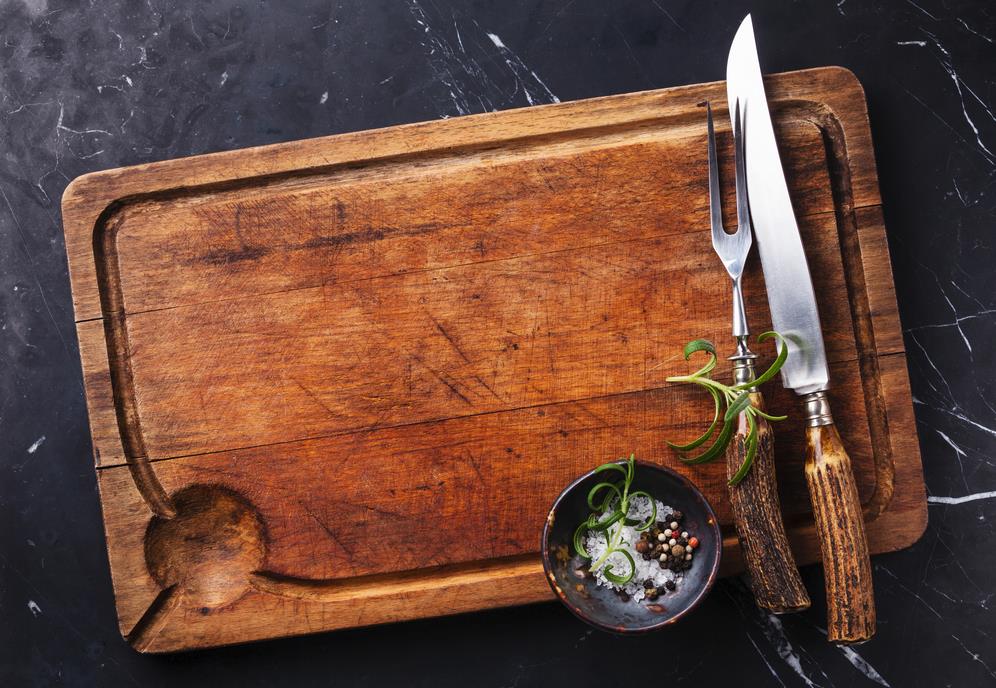
Wooden cutting boards have been in use for as long as we know. The self-healing properties, classic aesthetics, and durability of wood make it one of the best cutting board materials.
Wooden boards are largely available in a variety of shapes and textures.
Things to look for when buying a wooden cutting board
When you are out to shop for a wood cutting board, make your decision based on:
- Hardness
- Thickness
- Grain
Hardness
Based on hardness, wooden cutting boards are made up of two types of wood i.e., Hardwood and Softwood.
| Features | Hardwood Cutting boards | Softwood Cutting boards |
| Porosity | Less porous | Water sensitive |
| Maintenance | Easier to clean | Tends to crack easily |
| Affordability | Costly | Less costly |
| Pros | Can be sanded | Kinder to knives |
| Examples | Maple, Acacia, Walnut, Cherry | Soft maple, birch, oak |
Look Out!!
You can choose any type of wood depending on your liking and budget however, try avoiding the following woods:
- Oakwood/ Ashwood– The porous structure retains too much water and is easily degraded.
- Tropical trees’ wood– They belong to warmer regions and produce toxins that can contaminate the produce in contact.
- Teak wood– Apart from its durability, the extreme hardness and abundance of silica of teak wood can put a toll on your knives.
To learn more about choosing the right wood for your wooden cutting board, click here.
Tips & Tricks
Using the wood of trees that produce edible fruits, nuts or oils is a good choice as they are safe to use.
Thickness
Cutting boards come in a variety of thicknesses. Generally, wood boards can be up to 2 inches in thickness.
Boards that are thick are less prone to splitting or warping and therefore are more durable than thinner cutting boards.
A thick cutting board is hefty and is difficult to slip.
Grain
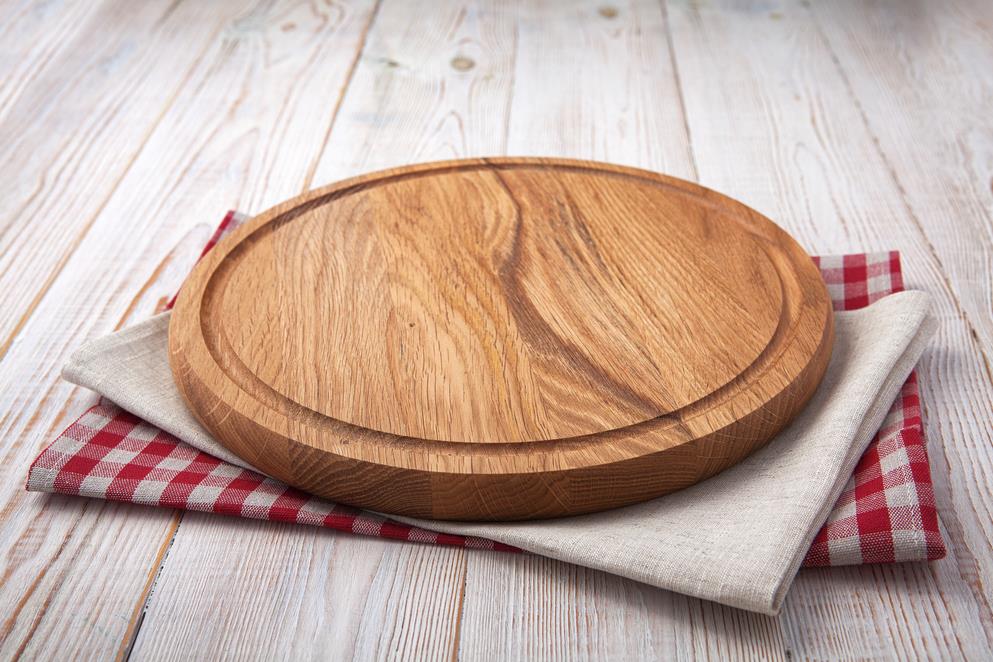
In terms of making, cutting boards can be divided into three types, end grain, edge grain, and flat grain.
| End Grain | Edge Grain | Flat Grain | |
| Definition | The planks are joined so that the wood fibers are pointing upwards | The planks are joined so that the wood fibers go parallel to the surface. | The planks are glued from edge to edge. |
| Hardness and durability | Kindest on the knife edges | Best in strength and durability | Comparatively less strong and less durable |
| Price | Costly | Comparatively cheaper. | Cheapest |
| Durability | Comparatively less scarring can be seen. | Cutting across the grain can cause wood scoring. | Highly prone to damage and splitting, over time. |
| Thickness | Tends to be thicker and heavier (approx. 4 cm) | Comparatively thinner and lighter. (approx. 1 inch) | Can vary in size and thickness. |
Your choice may vary depending upon your requirement and budget.
Why should I choose wooden cutting boards?
Some of the key features of a wood cutting board include:
- Contains antibacterial properties
- Durable
- Aesthetically pleasing
- The surface can easily be sanded and renewed
- Stays firmly on the slab due to its weight
Is a wooden cutting board good for my knives?
They say, “a sharp knife is a chef’s best friend”, and your wood board takes it too seriously. Wooden cutting boards, especially end grain boards are knife friendly. The knife cuts along the fibers and not across it, which keeps the blade and edges sharp.
Handpicked for you
True cutting power in the palm of your hand
Using highly resistant hardwoods, like teak, can although blunt the edges of your knives. Therefore, make your choices wisely!
What are the downsides to using a wooden cutting board?
Apart from all the good stuff, there are a few cons. of using a wood cutting board.
High Maintenance
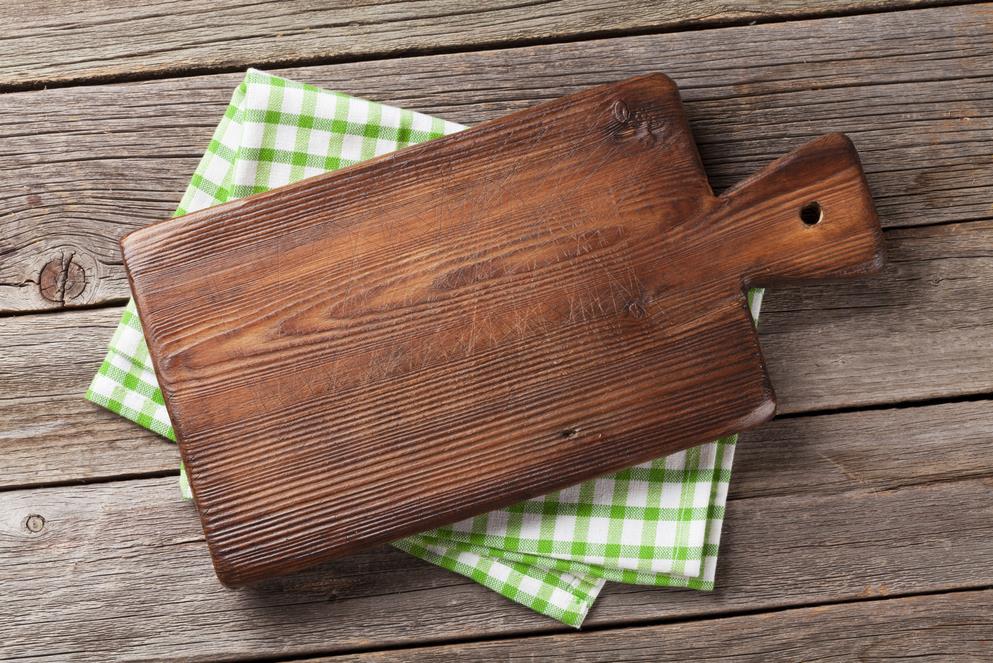
These boards require proper maintenance, for a long, lasting performance.
To give your cutting board a long and healthy life, make sure you:
- Oil it regularly using any good mineral oil. The frequency of oiling depends on the type of wood it is made up of. Most boards come with a handling manual to help.
- Avoid using harsh chemicals or bleach to clean them up
- Don’t put your wood cutting board in a dishwasher.
- You can sand your cutting board after a few years, to renew it.
Sanitization
A wooden cutting board is difficult to sanitize. Avoid using harsh chemicals on it. Just make sure you wash it regularly with soap water.
Absorbency
The porous structure of wood allows it to absorb food stains and pungent smells which may interfere with other food.
Tips & Tricks
Use more than one cutting board, irrespective of the material you choose. Use different chopping boards for meat and vegetables. This not only minimizes cross-contamination but also comes in handy when preparing a variety of dishes.
Plastic cutting board
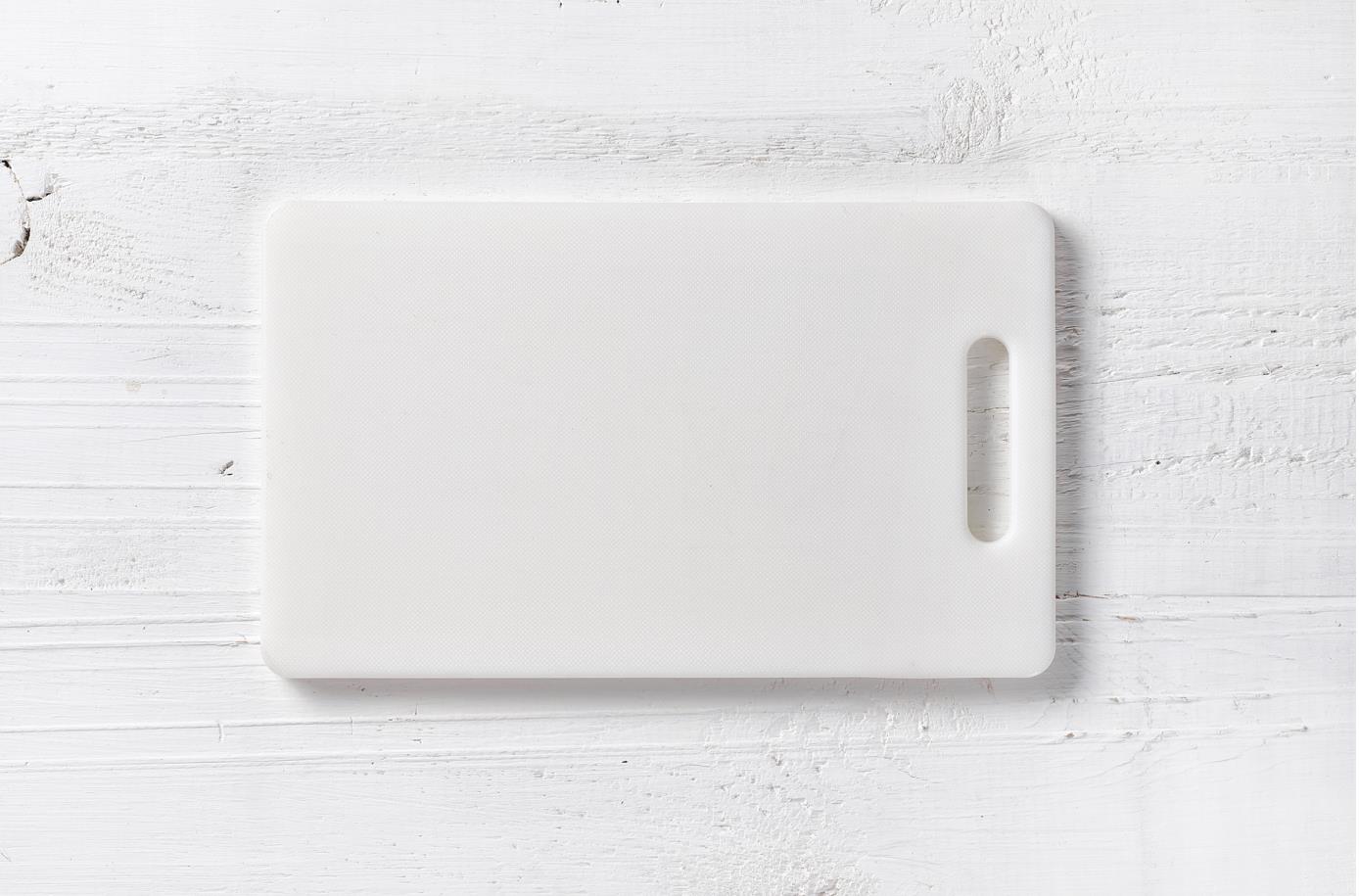
After wooden cutting boards, the next competitor that surfaced the market, and is still giving good competition, is the plastic cutting boards.
Plastic boards come in all sizes, shapes, and colors. The vibrant colors make it easy for professional chefs to color-code their plastic boards.
What type of plastic is used for making plastic cutting boards?
Generally, plastic cutting boards are made up of two different types of plastics:
- High-density polyethylene (HDPE)
- Polyvinyl acetate (PVA)
Both of them are hard enough for a chopping board but are still gentle to your knives.
Professional Tip
As per professional chefs, buy a plastic board that can be sliced using a kitchen knife.
What to look for when buying a plastic cutting board?
Apart from the aesthetics and budget, make sure you buy a plastic board that is FDA approved and is in compliance with the National Sanitation Foundation (NSF).
Why should I choose plastic cutting boards?
Plastic chopping boards are a very good option if you are going easy on your wallet. To convince yourself a bit more, check out the following key features:
- Cheapest
- Best for amateur/ home cooks
- Easy to color code, to avoid cross-contamination.
- Light-weight
- Water-resistant
- Durable
- Less absorbent to pungent smells
- Gentler to knives
- Some models can be made from recycled materials, thus eco-friendly.
What are the downsides to using a plastic cutting board?
It may seem like we are in love with the plastic cutting boards, but there’s more to it. Plastics might seem the most affordable material, however, it does come with a price.
- Soft plastic boards can easily be scored by knives.
- A scored board is not only aesthetically unpleasant but also harbors a lot of bacteria.
- Deep scars from the knife are not only a sanitization issue but also, make it difficult to clean the board completely.
- Can be stained easily.
- Are prone to slipping due to their lightweight, and can be hazardous.
- Less durable than wooden cutting boards and warps faster.
- Can melt if used as a serving tray for very hot dishes.
Is a plastic cutting board good for my knives?
Plastic boards are generally soft and gentler on professional knives.
However, make sure you look out for renowned varieties, as most boards that are labeled safe to professional knives are false in their claim.
Does a plastic cutting board require high maintenance?
When it comes to maintenance, plastic cutting boards are the easiest.
These boards are:
- Dishwasher friendly
- Can be deep cleaned either using white vinegar, baking soda, dish soap or a mixture or bleach and water
- Can be exposed to hot water for a longer period of time
Tips & Tricks
If your plastic board has a lot of knife cuts, it’s better to replace it.
Rubber cutting board
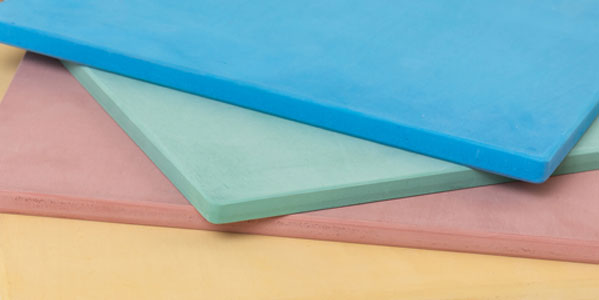
Rubber cutting boards are the newbies that have become the talk of the town, in no time.
With all the good properties and almost none on the downsides, rubber cutting boards are the toughest competitor to wooden cutting boards.
Previously, rubber cutting boards were only used in restaurants, however as time passed, they are now being considered one of the safest options for home kitchens too.
Tips & Tricks
As rubber cutting boards can be sanded down, looking for a thicker cutting board will be a smart move.
How are rubber cutting boards better?
Similar to wood in its healing properties, some other highlighted features of a rubber cutting board include:
- Non-porous structure. Don’t retain smells or stains.
- Durable. Lasts longer than wood.
- Water-resistant and thus prone to cracking.
- Scratch-resistant surface
- Easy to clean
- Gentle on knives
- Hefty and is placed firmly, while you are working on it.
- Can be resanded and renewed
- More sanitary than plastic
Are there any downsides to using rubber boards?
A coin has two faces, and similarly, rubber boards have their downsides too.
- Very costly.
- The heavyweight can make it a nuisance to move around.
- Less sanitary than the wooden cutting boards.
- Almost no variety in shapes and colors and therefore, may not be aesthetically pleasing.
- Can melt under hot dishes.
- They are not always dishwasher safe. You can check the label or user guide to see if your cutting board is dishwasher safe or not.
How will a rubber cutting board treat my knives?
Rubber cutting boards are a good option when it comes to knife edges.
These boards are more like wooden boards, and keep your knife edges sharp for a very long time.
Are rubber cutting boards easy to maintain?
Rubber boards are easy to maintain as they don’t require regular oiling like wooden cutting boards.
They are generally dishwasher safe, can withstand extremely hot water and harsh cleaning chemicals, such as bleach.
Tips & Tricks
Even if your rubber cutting board is not dishwasher safe, you can easily clean it off using hot water and soap.
Bamboo cutting board
Another less common material used for the preparation of cutting boards is Bamboo.
Bamboo boards are often confused as wooden cutting boards, however, this is a misconception as bamboo is grass and not a tree.
Key Features
The key features of bamboo cutting boards include:
- Eco-friendly
- Lightweight
- Economical
- Sturdy and durable
- Hygienic
- Suitable for heavy-duty chopping
- Does not split easily
- Comes in a variety of designs
Why are bamboo cutting boards considered eco-friendly?
If you are a friend of the environment (as everyone should be!)bamboo boards might spark your interest. Bamboo is eco-friendly as:
- They are biodegradable
- They grow rapidly
- It’s cultivated without pesticides
What are the disadvantages of using bamboo cutting boards?
Bamboo cutting boards are:
- Hardwood
- Can retain stains
- Warp when exposed to water for longer period of times
- Not made for dishwashers
- Needs to be replaced after sometime
- High maintenance, requires oiling 2 to 3 times a week.
- Often include toxic glues and silica.
Are bamboo cutting boards good for knives?
Bamboo is a very hard grass (somewhere between walnut and hard maple) and is, therefore, hard on knives.
Most manufacturers don’t recommend bamboo boards for their knives.
How can I use my bamboo cutting board, alternatively?
If you already have a bamboo cutting board, don’t worry.
You can always use them for light choppings like bread or use them as a cheese platter.
Tips & Tricks
When buying, look for bamboo boards that are free of formaldehyde glues.
Stone/ Granite/ Marble/Glass cutting boards
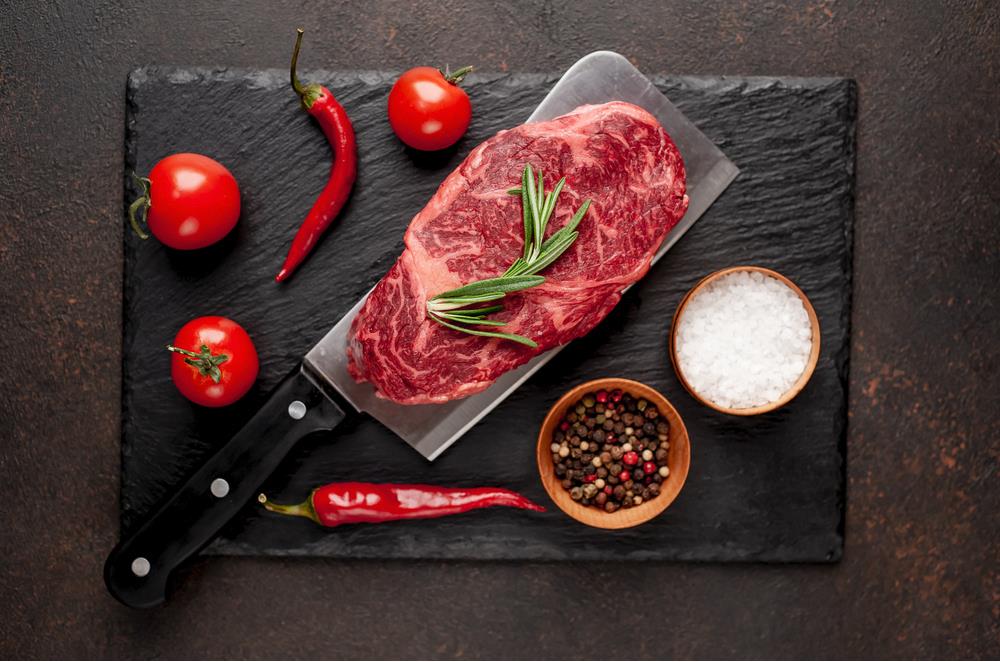
If you are here to know what not to choose, this is the right section for you!
NEVER and I repeat, NEVER use stone, granite, marble, or glass cutting boards if you have even the slightest of love for your knives.
We know that some of the fancy cutting boards can be very tempting but trust us when we say that the hard surfaces are not only dangerous for your knives but yourself, too!
What are these boards used for?
We agree that a fancy glass or marble board can be a treat for eyes, however, instead of blunting your knives on them you can use them as:
- Serving dishes for hot pans and dishes.
- Cheese platter or Charcuterie
- Rolling pans for pastry or cookie dough
How are these boards harmful?
When using a sharp knife, your last option is to pair it up with a slippery surface. And Glass or marble is slippery!
Just a slip of the hand and you can easily slice off your finger with that piece of meat. So, it’s better not to take risks.
Composite cutting boards
Composite cutting boards, as the name suggests, are composed of a variety of materials.
The quality of these cutting boards varies depending upon the material they are manufactured from.
Although moderately pricey and available in a variety of designs, we personally (and this is our personal choice) don’t recommend composite cutting boards.
What are composite cutting boards made up of?
Composite cutting boards can be made from:
- Recycled and compressed cardboard
- Recycled paper
- Harvested wood fiber, etc.
What are the pros and cons of composite cutting boards?
The composite cutting boards can have the following features and disadvantages
| Pros. | Cons. |
| Durable and long-lasting | Wood-based boards are costly |
| Prone to knife scoring | Silica and glue is not food grade |
| Moderately priced | Paper and cardboard-based boards are flimsy |
| Renewable | Is harsh to knives |
| Available in a variety of designs | Not safe for a dishwasher |
| Can be used as hot pads |
What kind of material should I choose?
What kind of material should you choose, clearly depends on your choice, your aesthetics, and your budget. However, our two cents on the situation goes as follows:
- If you prefer aesthetics, wooden cutting boards are the best choice for you as they are both, aesthetically pleasing as well as hygienic.
- If you are short on budget, plastic cutting boards are the right option for you, because they are both economical as well as easy to maintain.
- If you are all about hygiene, you can go with either wood, plastic, or rubber.
- However, we recommend using separate boards for raw meat, fruits and vegetables, bread and nuts, aromatics, and cooked meat, to avoid cross-contamination.
- And last but not the least, if you are tired of using wooden boards and want to replace them with something trendy, rubber cutting boards will do the job for you.
Conclusion
We have tried to save you the hard work and compared the best cutting board materials, their pros. and cons. and their key features. Cutting boards are a great kitchen tool to invest in. Whether you are up for a heavy-duty cutting board or an eco-friendly one, we hope this article has answered your queries.
If you liked our content, you’ll probably like our products as well. Head over to our online shop to check our inventory.












